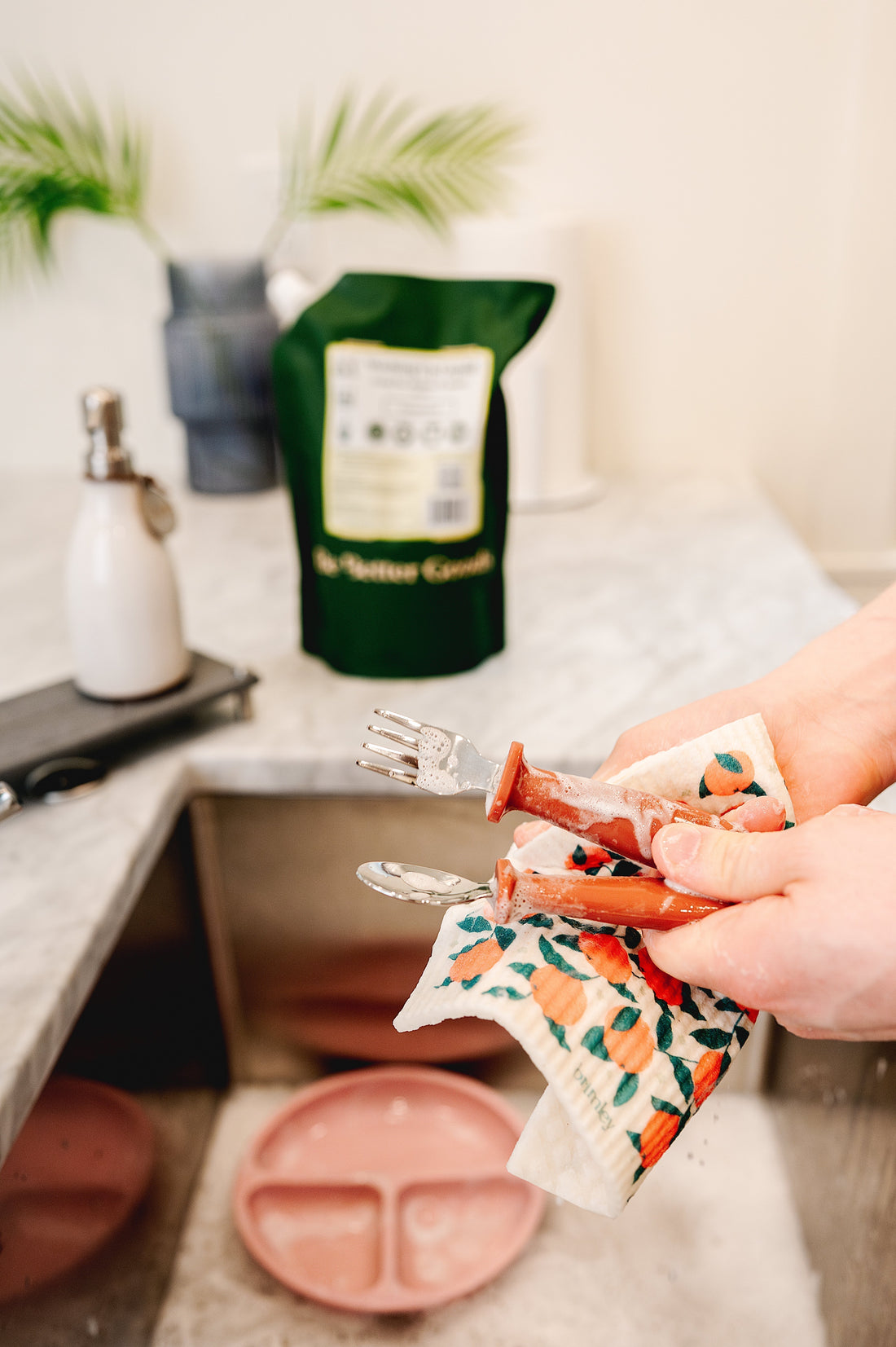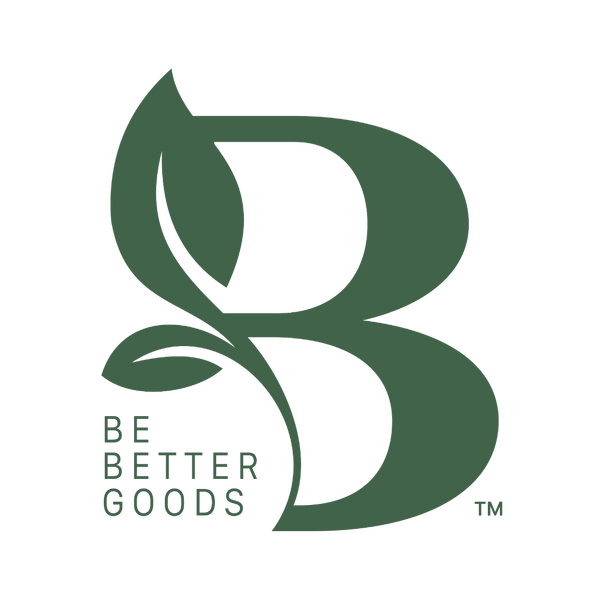
Eat. How Cleaning Chemicals Enter Our Diet
Your diet deserves better.
No one intentionally eats cleaning chemicals, but even if we’re not swallowing soap or scrubbing our mouths with disinfectant, trace amounts of cleaning chemicals end up on the items we use to eat and drink. Plates, forks, baby bottles, glasses and more. While we trust that rinsing is enough, science tells us that tiny residues remain. Those tiny, repetitive exposures add up over time, and they matter.
Everyday Exposure Adds Up
Whether you wash your dishes by hand or run them through the dishwasher, trace residues can remain—especially when synthetic ingredients like alcohol ethoxylates or Sodium Laureth Sulfate (SLES) are involved. These ingredients cling to grease, and sometimes, they cling to your dishes too.
Residues commonly stick to:
- Poorly rinsed hand-washed dishes
- Plastic food containers
- Sippy cups and baby bottles
- Utensils and scratched cookware
Dishwashers are another major residue source, particularly due to rinse aids. These products contain surfactants designed to help water sheet off dishes but don't always fully rinse away [1]. Many dishwasher pods include rinse aids.
Why This Matters: Health Impacts of Residue Exposure
Gut Damage
Alcohol ethoxylates and other surfactants can weaken the lining of your intestines by damaging tight junctions—the structures that hold your gut lining together. This can allow toxins to pass into your bloodstream, triggering inflammation and even contributing to autoimmune responses.
A 2023 study using human gut models found that dishwashing rinse aids containing alcohol ethoxylates disrupted the epithelial barrier and triggered inflammatory gene expression—even at a 1:20,000 dilution [1].
Microbiome Disruption
Your gut microbiome—the trillions of good bacteria that help regulate your immune system, mood, and digestion—doesn’t respond well to synthetic surfactants. Emerging research shows that emulsifiers chemically similar to dish surfactants (like polysorbate 80) alter microbial composition and promote inflammation.
Mouse models fed common emulsifiers displayed gut dysbiosis and a thinner mucus barrier, predisposing them to metabolic and inflammatory disorders [3].
Hormone Disruption
Some residues, especially those stemming from ethoxylated ingredients, may contain contaminants like 1,4-dioxane—a known carcinogen and suspected endocrine disruptor. Nonylphenol ethoxylates (NPEs), historically used in dish detergents, degrade into nonylphenol, a xenoestrogen that mimics estrogen in the body.
EPA studies link NPE exposure to reproductive and developmental toxicity; nonylphenol has been detected in human blood, breast milk, and urine [4].
Ingredients to Watch Out For
Ethoxylated Surfactants (SLES, Alcohol Ethoxylates, NPEs)
- Commonly found in dishwasher detergents, rinse aids, and dish soaps
- Often contaminated with 1,4-dioxane, a probable human carcinogen [2]
- NPEs degrade into nonylphenol, an endocrine disruptor linked to reproductive harm [4]
Synthetic Fragrances
- Typically labeled as “fragrance” or “parfum,” often containing undisclosed phthalates
- Linked to hormone disruption and allergic reactions
Petrochemical Preservatives (Isothiazolinones, Parabens)
- Commonly used preservatives known to cause allergic reactions and skin irritation
- Linked to endocrine disruption, neurotoxicity, and chronic health concerns
Choose Better: Safer Cleaning for Every Bite
Switching to petrochemical-free cleaning products protects your gut, microbiome, hormones, and family.
Be Better Goods cleaners are:
- 100% petrochemical-free
- Plant- and mineral-based
- Ingredient-transparent
- Safe for everyone, including babies and the planet
Ready to clean better?
Start with products that touch your food. Visit our product collection.
Non-toxic cleaning. No compromises.
Sources
- Ogulur et al. (2023), pubmed.ncbi.nlm.nih.gov
- EPA TSCA Risk Evaluation for 1,4-Dioxane (2024), epa.gov
- Naimi et al. (2021), pubmed.ncbi.nlm.nih.gov
- EPA Fact Sheet on Nonylphenol/NPEs (2025), epa.gov
